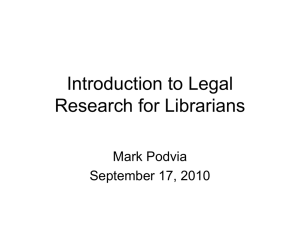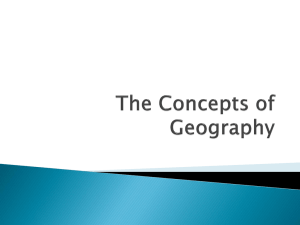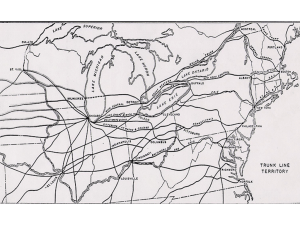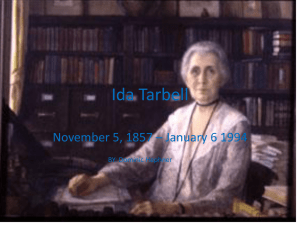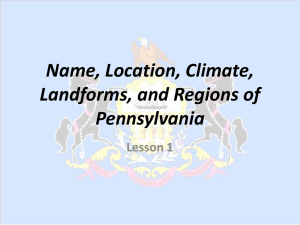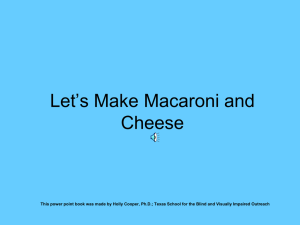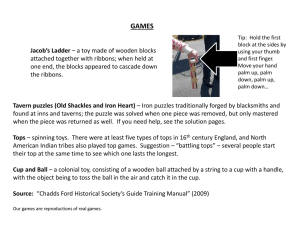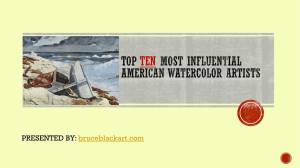Understanding Text Structures
advertisement
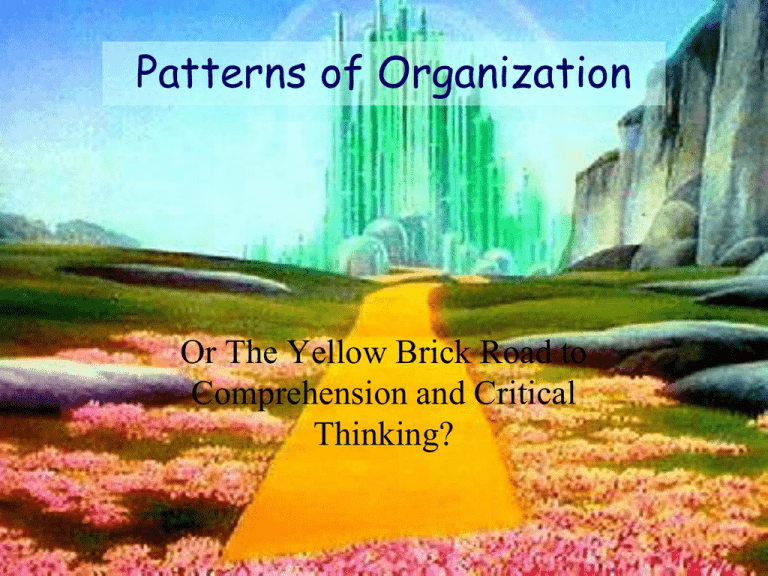
Patterns of Organization Or The Yellow Brick Road to Comprehension and Critical Thinking? Patterns of Organization, Text Structure, Rhetorical Modes, Oh, My! Relax, Dorothy! These Are Synonyms for Our Old Favorites: • • • • • Compare/contrast Cause/effect Process Problem/solution Narrative • • • • Argument Classification / division Example Descriptive Why Explicitly Teach Patterns of Organization? • Writing and reading are two very different cognitive functions • Essential in note-taking across the curriculum • Reading vs. Writing process • Formats in which claims and evidence are presented • Establishes, the relationship between the claims and the evidence • When the relationship is clear, evaluation of the text can occur • We cannot expect automaticity in critical reading without explicitly teaching patterns of organization What Do You Mean by automaticity? • What the reader recognizes automatically • Facilitates anticipation • Anticipation facilitates comprehension Ahh, so this is a visual of what reading looks like! What happens if a gear gets stuck? Getting my students to the Emerald City of Reading Comprehension by understanding Organizational Patterns. Expectations of Readers As early as third grade, students are expected to recognize expository text structures such as the following: sequence, description, compare-contrast, cause-effect, and problemsolution. The ability to identify and analyze these text structures in reading helps make expository text easier to understand. While the understanding of text structure is important at the lower grades for reading and writing proficiency, it is crucial for students to understand the complicated and varied demands of high school and college reading. Understanding Text Structures Lesson 1 What is a text structure? • “Text structure” refers to how a piece of text is organized. • Recognizing how the text is organized or put together helps us to understand what it’s about. Think of it this way… • Builders can use different types of structures to build different things. • For example, a skyscraper is a different kind of structure from a house. In the same way, authors… • Use different structures to put together different types of texts depending on the purpose of the message and what they are writing about. Text Structures for Non-Fiction or Expository Texts 1. Chronology – order of events 2. Compare/Contrast –describes similarities and differences 3. Cause and Effect – tells how or why something happened and the result LET’S TAKE CLOSER LOOK! AT EACH TEXT STRUCTURE FOR EXPOSITORY TEXT Chronological/Sequential Order • Purpose: to inform – reader of the order in which events occurred or order of step in a process. • Keywords: first, next, later, then, before, after, finally, meanwhile •Even historical events or time periods in history give a sense of time since they are directly correlated with dates in history. Chronological Order • Read this how to passage. How does the text structure help you with the task? HOW TO MAKE MACARONI AND CHEESE First, boil some water and make some macaroni. Then, make your cheese sauce. After the cheese sauce is ready, mix it with the macaroni. Bake the entire thing in the oven. Finally, it’s time to eat! Chronological /Sequential order Notice how recognizing the text structure helps you to answer the following question. First, boil some water and make some macaroni. Then, make your cheese sauce. After the cheese sauce is ready, mix it with the macaroni. Bake the entire thing in the oven. Finally, it’s time to eat and enjoy! Which of the following steps comes after mixing the cheese sauce with the macaroni? A. Eat and enjoy! B. Bake in the oven C. Make the cheese sauce D. Boil water and cook macaroni B Which paragraph is in chronological order? Pennsylvania has many historic sites. You can visit Revolutionary war sites, like Valley Forge. You can also visit important locations from the Civil War, like Gettysburg. Finally, you can also see the site of the first oil well in Titusville. Pennsylvania has many neat places to visit! Through the ages, Pennsylvania has seen many interesting events. The state was founded in 1681 by William Penn. Later, Pennsylvania was the site of important Revolutionary War battles. After that, Pennsylvania was home to new factories during the Industrial Revolution. Today, Pennsylvania continues to make history. You got it! It’s this one. Can you find the keywords that show this order? •Through the ages •1681 •Later •Revolutionary War •After that •Industrial Revolution •Today Through the ages, Pennsylvania has seen many interesting events. The state was founded in 1681 by William Penn. Later, Pennsylvania was the site of important Revolutionary War battles. After that, Pennsylvania was home to new factories during the Industrial Revolution. Today, Pennsylvania continues to make history. Excellent!!! How does the text structure help us to understand the historical events of Pennsylvania? When was the state of Pennsylvania founded? A. After the Revolutionary War B. During the Industrial Revolution C. 1681 C Through the ages, Pennsylvania has seen many interesting events. The state was founded in 1681 by William Penn. Later, Pennsylvania was the site of important Revolutionary War battles. After that, Pennsylvania was home to new factories during the Industrial Revolution. Today, Pennsylvania continues to make history. Compare/Contrast • Purpose: to inform the reader of similarities and differences between these two or more things. Compare/Contrast Keywords Of course we should be able to find keywords to help us figure it out. KEYWORDS: same, both, different, in common, alike, similarly, opposite, while, on the other hand See if you can find some in the following passage. Can you identify any keywords for compare/contrast? The cardinal and the cedar waxwing are two common birds. Both have crests on their heads. Both are common at birdfeeders. But the birds have some differences. The male cardinal is a bright red, while the waxwing is brown. The cedar waxwing often migrates from place to place. On the other hand, the cardinal stays in one place year after year. Using keywords we can complete a Venn diagram that helps us to the similarities and differences better The cardinal and the cedar waxwing are two common birds. Both have crests on their heads. Both are common at birdfeeders. But the birds have some differences. The male cardinal is a bright red, while the waxwing is brown. The cedar waxwing often migrates from place to place. On the other hand, the cardinal stays in one place year after year. •Male is red •Stays in one place •Crested head •Use bird feeders •Male is brown •Migrates from place to place Organizing information helps me understand what I am reading. a. b. c. c. Which of the following characteristics do these birds have in common? They both have crested heads They both migrate Both males are red Both males are brown •Male is red •Stays in one place •Crested head •Use bird feeders •Male is brown •Migrates from place to place A Cause/Effect Text Structure • Purpose: to inform - how one event leads to another, why decisions are made and the results. • Keywords: because, effect, as a result, consequently, and so. Can you identify the cause and effect? Keywords? Baby painted turtles spend all winter in their nests. They have special chemicals in their blood that can keep their blood from freezing. As a result, baby painted turtles can survive freezing temperatures! Can you identify the cause and effect? Keywords? Excellent!!! Baby painted turtles spend all winter in their nests. They have special chemicals in their blood that can keep their blood from freezing. As a result, baby painted turtles can survive freezing temperatures! This is the cause These are effects. Baby painted turtles spend all winter in their nests. They have special chemicals in their blood that can keep their blood from freezing. As a result, baby painted turtles can survive freezing temperatures! Why are baby painted turtles able to survive freezing temperatures in the winter? A. They spend all winter in their nests B. They cannot survive freezing temperatures C. They have special chemicals in their blood C Review • Can you explain the difference between chronological order and compare and contrast? • What is the purpose of using cause and effect to tell a story? • How can clue words help you as a reader? Match the clue words! Can you identify the text structure that these clue words indicate? on the other hand similarity Compare/Contrast as a result Cause/Effect after that Chronological Order TEXT STRUCTURES LESSON 2 Text Structures for Non-Fiction or Expository Texts 1. Problem/Solution-identify a problem and provide a solution 2. Position/Reason- to take position on an topic and provide reasons for your position. (fact/opinion) 3. Description/Categorization- group/sort things that are similar Problem/Solution Text Structure • Purpose: to inform reader about a problem, and offer one or more solutions. Problem/Solution Keywords Synonyms for problem: difficulty, struggle, uncertainty, worry, threat, and trouble Synonyms for solution: possibility, hope, bright spot, answer, and future A simple example of problem/solution text structure Park School had a terrible problem. Every day at recess, students would argue over the slides. Teachers had to spend time every day taking care of the arguments. Finally, one teacher came up with a great solution. They bought another set of slides that everyone could enjoy. Can you find the problem and the solution in this paragraph? An example of problem and solution Park School had a terrible problem. Every day at recess, students would argue over the slides. Teachers had to spend time every day taking care of the arguments. Finally, one teacher came up with a great solution. They bought another set of slides that everyone could enjoy. Here is the problem Here is the solution Let’s read this passage for a more challenging example. Think about how you could organize the information. We could organize the information in a process chart like this one so we can the each part more clearly and be able to answer a question. Which of the following is a problem Nightingale helped to solve? A. Many lives were saved B. She wrote letters asking for supplies C. The hospital was dirty. D. Hospitals improved Position/Reason • Author’s Purpose: to persuade and/or to inform • The reader must pay close attention to details that are fact and those that are opinion. Fact or Opinion Fact • A fact is statement that can be proven. • For example: Hurricane Katrina hit the US in 2005. Opinion • A statement that cannot be proven. • Contains words that show emotions or feelings • EX: “Chocolate ice cream is best!” Where are the facts? Are there any opinions? Once again you can see how using a simple chart will help you sort the information so you can decide for yourself. Which of the following statements is NOT a fact about money? A. Aztecs used cacao beans. B. Native Americans used wampum. C. People of Yap used heavy stones. D. Money is strange. Position/Reason #1 I think students should be allowed to wear to pajama pants to school. They are comfortable and don’t cause any distraction to class. I think students will actually do better if they are more comfortable. #2 Students should not be allowed to pajama pants to school because it is just not courteous to others to come to school in pajamas. Teachers dress professionally and so should students. In a recent study, statistics showed that people who dressed more professionally, behaved more professionally as well. If students dress like they are ready for sleep, then they may be less attentive and disruptive. DECISIONS FOR OR AGAINST A CERTAIN ACTION SHOULD BE BASED ON FACTS NOT OPINION. ARE THERE ANY FACTS PRESENTED IN POSITION/REASON STATEMENT #1? ARE THERE ANY FACTS PRESENTED IN POSITION/REASON STATEMENT #2? BASED ON THE FACTS, WHAT DECISION WOULD YOU BE FOR OR AGAINST ALLOWING PAJAMAS IN THE SCHOOL DRESS CODE? Last One… Description/Categorization • Texts organized using this structure will list, group or categorize various types of things according to a specific relationship. • These things may have common quality. • Let’s do a quick example, we will need 5 volunteers. • 10 seconds to choose your helpers. For Example… • Topic: Sports • Many different sports are there? • What are some different categories we can use to describe them? • Let’s read the next passage to see an example of categorization and how we can organize it to help us understand the text. These text often use charts, graphs, or tables to help with organizing the information. Using a chart like this one helps you reader make sense of a lot of information at once. See how easily you can answer this question. Which of the following sports is NOT categorized as a court sport? A. Tennis B. Soccer C. Handball D. Squash THINK > PAIR > SHARE • What is the most important thing to pay attention to when reading a position/reason text? • Why is it important to identify the problem in a passage? • How can sorting information into categories help you?
